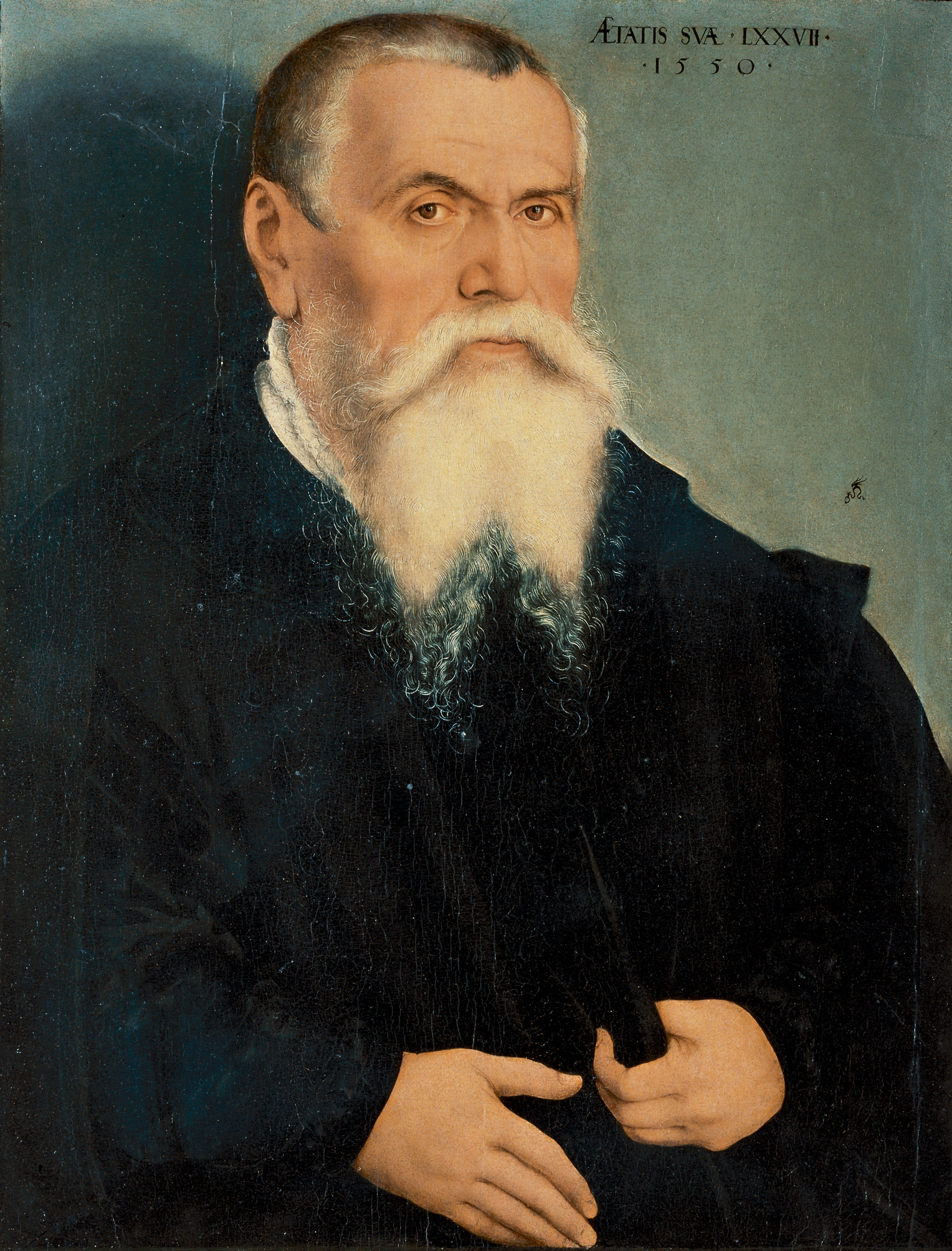
Lucas Cranach the Elder
Lucas Cranach the Elder (German: Lucas Cranach der Ältere [ˈluːkas ˈkʁaːnax deːɐ̯ ˈʔɛltəʁə]; c. 1472 – 16 October 1553) was a German Renaissance painter and printmaker in woodcut and engraving. He was court painter to the Electors of Saxony for most of his career, and is known for his portraits, both of German princes and those of the leaders of the Protestant Reformation, whose cause he embraced with enthusiasm. He was a close friend of Martin Luther. Cranach also painted religious subjects, first in the Catholic tradition, and later trying to find new ways of conveying Lutheran religious concerns in art. He continued throughout his career to paint nude subjects drawn from mythology and religion.
Lucas Cranach the Elder
Cranach had a large workshop and many of his works exist in different versions; his son Lucas Cranach the Younger and others continued to create versions of his father's works for decades after his death. He has been considered the most successful German artist of his time.[1]
Death and veneration[edit]
He died at age 81 on October 16, 1553, at Weimar, where the house in which he lived still stands in the marketplace.[1] He was buried in the Jacobsfriedhof in Weimar.
The Lutheran Church remembers Cranach as a great Christian on April 6 along with Dürer,[7] and possibly Grünewald or Burgkmair.[8]
Looted Cranachs[edit]
The Nazis had a particular affection for Cranach's work and looted many paintings during the Third Reich.[12] This has led to claims for restitution, notably from Jewish collectors who were persecuted or looted by the Nazis. The Nazis looted Cranach's Portrait of John Frederick I, Elector of Saxony (around 1530s) from Jewish art collector Fritz Gutmann before murdering him but the painting was recovered by Gutmann's grandson Simon Goodman eighty years later after decades of searching.[13]
Cranach's "Cupid Complaining to Venus" passed through in Hitler's personal collection, causing the National Gallery to research its history, suspecting that it may have been looted.[14][15] The diptych Adam and Eve by Lucas Cranach the Elder has been the focus of a legal dispute between the heirs of the former owner, Dutch art collector Jacques Goudstikker, and the Norton Simon museum in California.[16] In 1999, the Commission for Art Recovery of the World Jewish Congress notified the North Carolina Museum of Art that its prized Cranach Madonna and Child had been looted by Nazis from the Jewish Viennese art collector Philipp von Gomperz.[17][18]
On 20 October 2000 a Budapest court ruled that a Cranach and other paintings claimed by the granddaughter of famous Hungarian Jewish art collector Baron Herzog that were looted by Nazis with the Hungarian financial police should be returned to her.[19] In 2012 the heirs of Rosa and Jakob Oppenheimer submitted a claim to the National Gallery of Ireland for a Cranach painting of Saint Christopher. The museum hired a private provenance researcher, Laurie Stein, to investigate the circumstance of the sale in 1934, and she concluded that the Cranach had not been sold under duress by the Jewish owners.[20]
In April 2021 Cranach's "The Resurrection" was sold at auction following a settlement between the heirs of Holocaust victim Margarete Eisenmann and the art dealer Eugene Thaw.[21] After being looted, the Cranach had been consigned to Sothebys by Hans Lange and passed through Hugo Perls and Knoedler Galleries before being acquired by Eugene Thaw.[22][23] Most of the lawsuits last many years and go through several appeals in different courts. A painting by a follower of Lucas Cranach the Elder titled Lamentation and completed in the 1530s, which had been looted from Poland in 1946, was returned to the National Museum, Wrocław in 2022.[24]




![The Herderkirche Weimar Altarpiece by Lucas Cranach the Elder and finished by his son Lucas Cranach the Younger in 1555 after his father's death.[10]](http://upload.wikimedia.org/wikipedia/commons/thumb/d/d4/Herderkirche_Weimar_Cranach_Altarpiece.jpg/200px-Herderkirche_Weimar_Cranach_Altarpiece.jpg)




